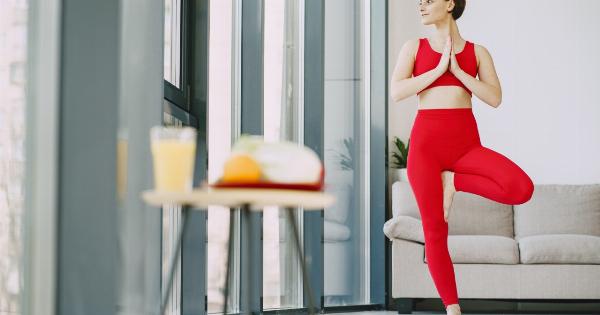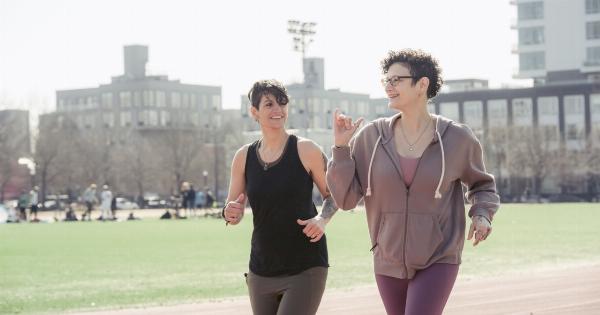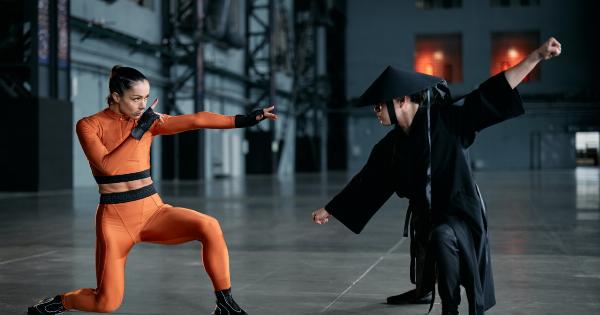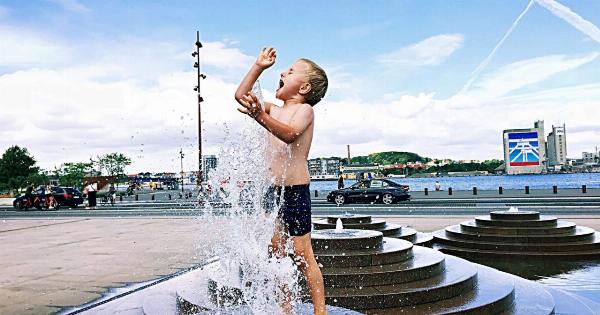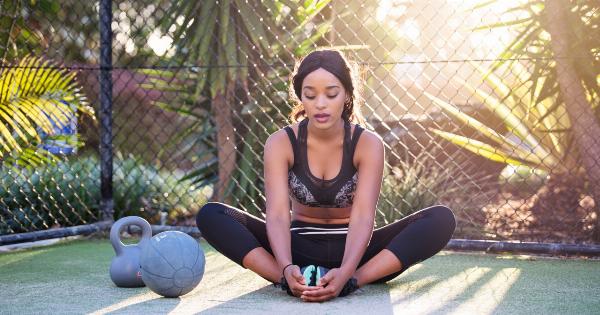Aging is a natural process that everyone goes through, but that doesn’t mean we can’t take steps to slow it down.
While there are numerous anti-aging products and treatments available in the market, one effective and natural way to combat aging is through daily yoga exercise. Yoga not only helps maintain flexibility and balance, but it also has several benefits that can contribute to graceful aging.
In this article, we will explore a specific daily yoga exercise that can help combat aging and keep you feeling youthful and vibrant.
The Benefits of Yoga for Aging
Yoga is a holistic practice that combines physical movements, breathing techniques, and meditation. When practiced regularly, it offers a wide range of benefits for individuals of all ages, including:.
- Increased flexibility and joint mobility
- Improved muscle strength and tone
- Enhanced balance and stability
- Reduced stress and anxiety
- Better respiratory function
- Improved cardiovascular health
- Increased mindfulness and mental well-being
- A boost to the immune system
The Daily Yoga Exercise to Combat Aging
While there are countless yoga asanas or poses that can benefit the aging body, we will focus on a specific exercise that targets multiple areas:.
1. Mountain Pose (Tadasana)
Start by standing tall with your feet together and arms at your sides. Keep your spine straight, shoulders relaxed, and gaze forward. Take slow and deep breaths as you hold this pose for 1-2 minutes.
Mountain pose helps improve posture, balance, and increases body awareness.
2. Forward Bend (Uttanasana)
From the Mountain Pose, exhale and slowly hinge forward from the hips, keeping your spine straight. Let your hands reach the floor or rest on your shins or ankles.
Hold this pose for 1-2 minutes while focusing on breathing deeply and relaxing any tension in the spine and hamstrings. Forward Bend helps release tension in the back, stretch the hamstrings, and calm the nervous system.
3. Downward-Facing Dog (Adho Mukha Svanasana)
From Forward Bend, walk your hands forward and step your feet back to form an inverted V shape with your body. Keep your hands shoulder-width apart and your feet hip-width apart. Press your palms into the mat and push your hips towards the ceiling.
Hold for 1-2 minutes, focusing on deep breathing and relaxing any tension in the shoulders and neck. Downward-Facing Dog stretches the entire body, strengthens the arms and legs, and calms the mind.
4. Child’s Pose (Balasana)
After Downward-Facing Dog, gently lower your knees to the ground and sit on your heels. Extend your arms forward and rest your forehead on the mat. Relax your whole body and breathe deeply for 1-2 minutes.
Child’s Pose helps release tension in the back, shoulders, and neck, and promotes relaxation and deep breathing.
5. Triangle Pose (Trikonasana)
From Child’s Pose, come up to a standing position with your feet approximately 3-4 feet apart. Extend your arms parallel to the ground and reach forward with your right hand, bending at the waist.
Place your right hand on your shin, ankle, or the floor outside your right foot. Extend your left arm towards the ceiling and gaze up. Hold for 1 minute on each side, focusing on breathing deeply and balancing the body. Triangle Pose strengthens the legs, stretches the hips and spine, and improves overall balance.
6. Tree Pose (Vrikshasana)
Stand tall with your feet together and shift your weight onto your left foot. Slowly lift your right foot off the ground and place the sole of your right foot against your inner left thigh or calf.
Press your foot against your leg and bring your hands together in prayer position at your chest. Balance for 30 seconds to 1 minute, focusing on a fixed point in front of you. Tree Pose strengthens the legs, improves balance, and promotes concentration and focus.
7. Bridge Pose (Setu Bandhasana)
Lie on your back with your knees bent and your feet flat on the ground, hip-width apart. Keep your arms alongside your body, palms facing down.
As you exhale, press your feet into the mat and lift your hips off the ground until your thighs and torso form a straight line. Hold for 30 seconds to 1 minute, focusing on steady breathing and engaging the glutes and thighs. Bridge Pose strengthens the back, buttocks, and thighs, improves spinal flexibility, and energizes the body.
8. Legs-Up-the-Wall Pose (Viparita Karani)
Lie on your back with your legs extended against a wall. Scoot your buttocks as close to the wall as possible and let your arms rest comfortably by your sides. Stay in this pose for 5 to 15 minutes, focusing on slow and deep breathing.
Legs-Up-the-Wall Pose helps reduce swelling in the legs and feet, relieves lower back tension, and induces deep relaxation.
9. Corpse Pose (Savasana)
After completing all the poses, finish your practice by lying flat on your back with your arms by your sides, palms facing up. Close your eyes and completely relax your body.
Stay in this pose for 5-10 minutes, focusing on releasing any remaining tension and embracing a sense of tranquility. Corpse Pose promotes deep relaxation, reduces stress, and allows the benefits of the practice to integrate into the body and mind.
10. Breath Awareness Meditation
After Savasana, find a comfortable seated position. Close your eyes and bring your attention to your breath. Observe each inhale and exhale without trying to change anything. If your mind wanders, gently bring it back to the breath.
Practice for 5-10 minutes, or longer if you wish. Breath Awareness Meditation helps calm the mind, reduce anxiety, and increase overall well-being.
Conclusion
Incorporating a daily yoga exercise routine into your life can have a profound impact on aging gracefully. The above sequence of yoga poses targets various areas of the body, helping improve strength, flexibility, balance, and mental well-being.
Remember to listen to your body and modify the poses as needed. With regular practice, you can combat aging and enjoy a healthy and vibrant life.







